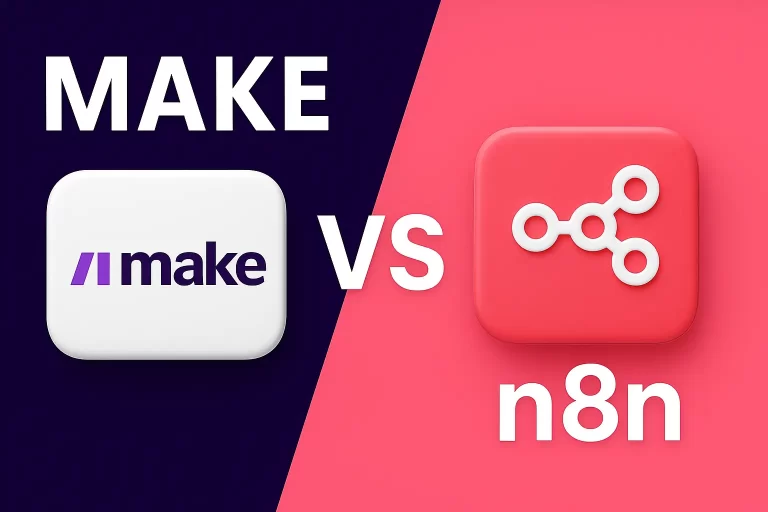Make.com for small businesses is rapidly becoming a go-to solution for entrepreneurs keen on improving operational efficiency through automation. As the landscape of business continues to evolve, the adoption of innovative tools is no longer a luxury but rather a necessity. In 2024, small businesses are increasingly recognizing the value of platforms like Make.com to navigate their growth while keeping costs low and maintaining competitive advantages.
Increasing Demand for Automation Tools
The surge in demand for automation tools among small businesses can largely be attributed to ever-growing competition. According to a recent survey, 67% of small business owners reported that they are prioritizing automation to keep pace with larger competitors. In a market where time is money, efficiency can directly impact the bottom line. Small businesses often wear multiple hats, which can lead to operational bottlenecks.
This urgency is inspiring business owners to seek out tools capable of simplifying their workflow processes. Automation not only saves time but also helps in minimizing human error, allowing staff to focus on activities that foster growth rather than routine manual tasks. The right automation tool can help a small business stand out by providing timely responses and exceptional service, important factors for customer retention in today’s fast-paced economy.
Key Features of Make.com
One reason small businesses are gravitating towards Make.com is its user-friendly design. The platform is known for its intuitive interface that allows users to easily understand how to set up and manage their workflows without steep learning curves.
Here are some of its key features:
- Easy Integration: Make.com seamlessly integrates with a variety of tools and applications, making it convenient to incorporate into existing workflows.
- Affordable Pricing: Unlike many automation platforms that come with hefty subscription fees, Make.com offers a pricing structure that is both competitive and accessible to smaller businesses.
- Customizable Workflows: Users can tailor workflows to fit the unique needs of their business, enabling greater flexibility in operations.
These features combine to create a platform that is both practical and cost-effective, making it particularly appealing for small enterprises operating on tight budgets.
Real-Life Applications of Make.com
Many small businesses have started utilizing Make.com to streamline various aspects of their operations. The versatility of the platform enables a broad spectrum of applications in different industries.
Some specific tasks that can be automated include:
- Email Management: Set up automated responses to customer inquiries or collect data from responses to analyze customer sentiments.
- Social Media Scheduling: Schedule posts across multiple channels, ensuring consistent engagement without manual intervention.
- Data Entry: Automate the gathering and organization of data into spreadsheets, reducing the likelihood of errors and freeing up time for more strategic tasks.
These scenarios illustrate that the potential of Make.com to reduce repetitive tasks allows small businesses to unleash their creativity and productivity.
Benefits of Using Make.com for Small Businesses
Users of Make.com have reported substantial productivity gains since adopting the platform. By automating routine tasks, businesses can allocate resources more effectively.
Consider the following benefits:
- Enhanced Efficiency: Automating tasks reduces the time it takes to complete daily activities, allowing teams to focus on more strategic initiatives.
- Cost Savings: Studies show that small businesses can save an average of 30% on operational costs when implementing automation solutions like Make.com.
By creating a more organized and efficient work environment, Make.com not only helps in cutting operational costs but also aids in achieving a higher level of output with existing resources.
Potential Challenges and Considerations
While the benefits of switching to Make.com are numerous, there are several concerns that small businesses may need to address. Common apprehensions typically involve the learning curve associated with transitioning to a new platform and the fear of data loss during migration.
To smooth the transition to Make.com:
- Conduct Thorough Research: Evaluate how the platform aligns with your business needs before making the switch.
- Leverage Support Resources: Utilize the wealth of tutorials and customer support available through Make.com to ease any apprehensions.
- Start Small: Begin by automating one or two processes before ramping up to full integration.
These steps can help in minimizing disruptions while allowing businesses to experience the benefits of Make.com without overwhelming their teams.
Future Outlook for Make.com
Looking ahead, the future of Make.com appears promising, with several upcoming features likely to attract even more users. As businesses increasingly turn to automation, platforms that can evolve to meet these changes will succeed.
Speculative upcoming features include:
- Enhanced Analytics Tools: Enabling businesses to track their automation effectiveness and make data-driven decisions.
- AI Integration: Incorporating artificial intelligence elements to handle more complex tasks and improve user interface even further.
- Community Add-ons: Encouraging a wider range of community-based plugins that businesses can customize to their unique needs.
The continuous development of Make.com and its user community fosters a supportive ecosystem, which can lead to greater utilization by small businesses seeking efficient solutions.
Make.com for small businesses is emerging as a pivotal resource in today’s competitive landscape. By offering simple integration, affordability, and adaptability, the platform enables small businesses to reap the benefits of automation without the complexity often associated with such transitions. The growing demand for automation tools, coupled with the tangible benefits reported by users, illustrates the increasing relevance of platforms like Make.com. As it evolves, the potential for further enhancements is likely to solidify its standing as a preferred choice among small businesses in 2024 and beyond. Entrepreneurs should take notice—this is an opportunity not to be missed.




